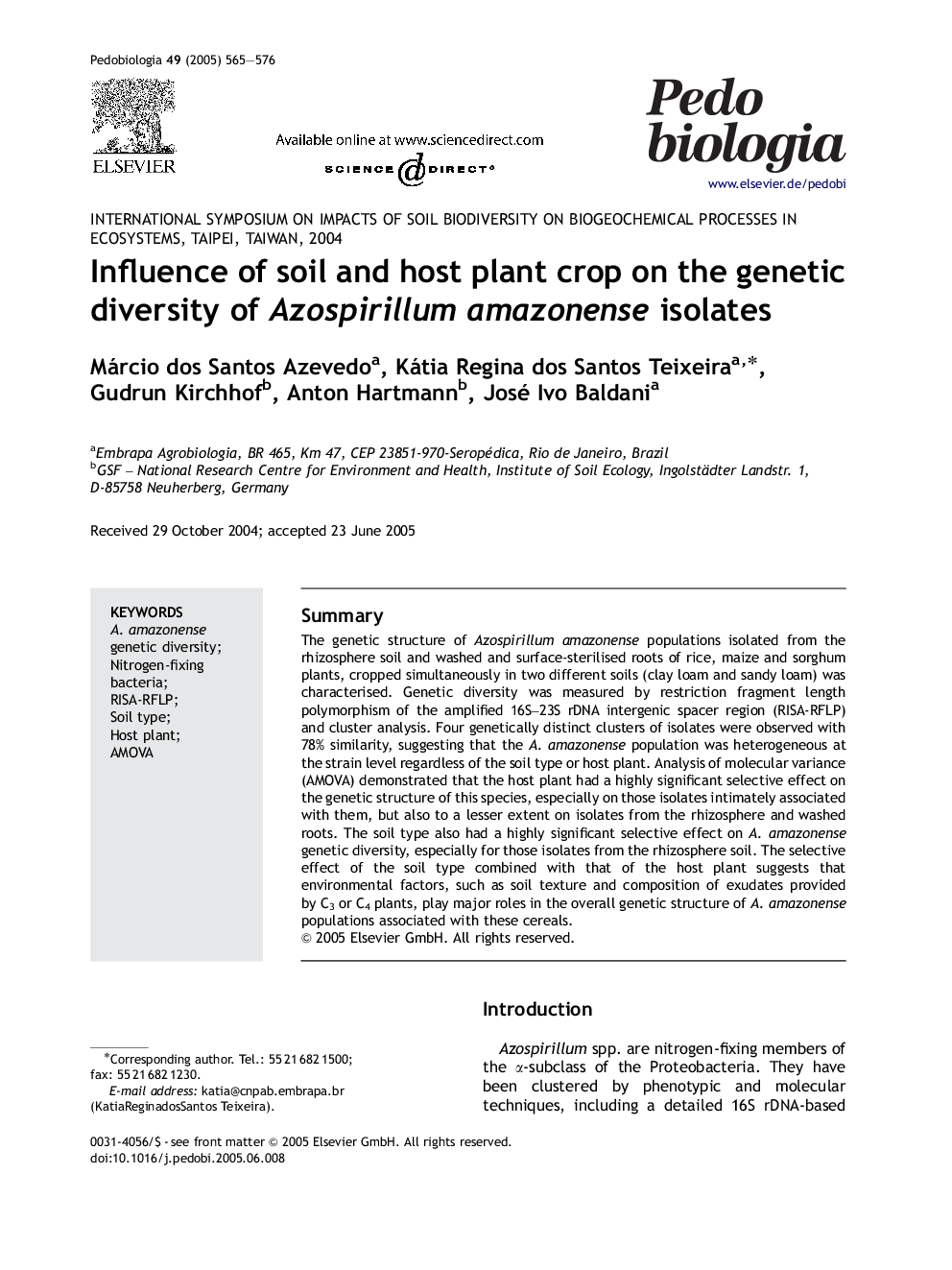| Article ID | Journal | Published Year | Pages | File Type |
|---|---|---|---|---|
| 10878675 | Pedobiologia | 2005 | 12 Pages |
Abstract
The genetic structure of Azospirillum amazonense populations isolated from the rhizosphere soil and washed and surface-sterilised roots of rice, maize and sorghum plants, cropped simultaneously in two different soils (clay loam and sandy loam) was characterised. Genetic diversity was measured by restriction fragment length polymorphism of the amplified 16S-23S rDNA intergenic spacer region (RISA-RFLP) and cluster analysis. Four genetically distinct clusters of isolates were observed with 78% similarity, suggesting that the A. amazonense population was heterogeneous at the strain level regardless of the soil type or host plant. Analysis of molecular variance (AMOVA) demonstrated that the host plant had a highly significant selective effect on the genetic structure of this species, especially on those isolates intimately associated with them, but also to a lesser extent on isolates from the rhizosphere and washed roots. The soil type also had a highly significant selective effect on A. amazonense genetic diversity, especially for those isolates from the rhizosphere soil. The selective effect of the soil type combined with that of the host plant suggests that environmental factors, such as soil texture and composition of exudates provided by C3 or C4 plants, play major roles in the overall genetic structure of A. amazonense populations associated with these cereals.
Related Topics
Life Sciences
Agricultural and Biological Sciences
Animal Science and Zoology
Authors
Márcio dos Santos Azevedo, Kátia Regina dos Santos Teixeira, Gudrun Kirchhof, Anton Hartmann, José Ivo Baldani,
